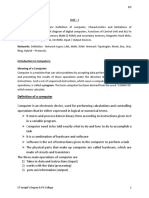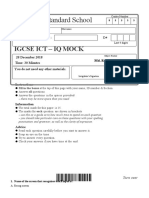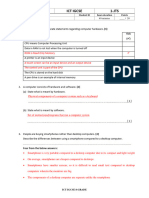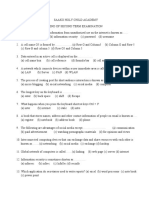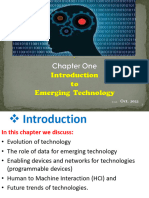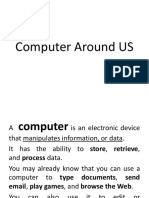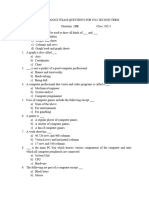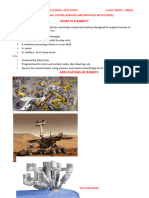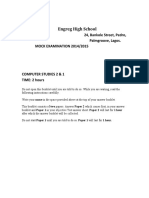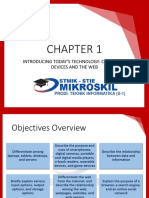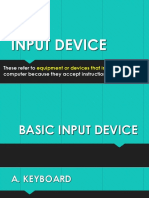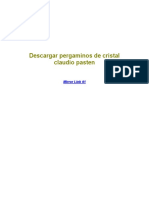100% found this document useful (2 votes)
401 views6 pagesLearning Objectives: Input Devices
The document discusses input devices for computers. It defines hardware and software, and identifies keyboards and mice as the basic input devices. It then describes various other specialized input devices such as touchscreens, scanners, digital cameras, bar code readers, microphones, webcams, and graphics tablets. These input devices allow users to enter different types of data into computers like text, images, sound and more.
Uploaded by
Jenna Trisha ParigdiCopyright
© © All Rights Reserved
We take content rights seriously. If you suspect this is your content, claim it here.
Available Formats
Download as DOCX, PDF, TXT or read online on Scribd
100% found this document useful (2 votes)
401 views6 pagesLearning Objectives: Input Devices
The document discusses input devices for computers. It defines hardware and software, and identifies keyboards and mice as the basic input devices. It then describes various other specialized input devices such as touchscreens, scanners, digital cameras, bar code readers, microphones, webcams, and graphics tablets. These input devices allow users to enter different types of data into computers like text, images, sound and more.
Uploaded by
Jenna Trisha ParigdiCopyright
© © All Rights Reserved
We take content rights seriously. If you suspect this is your content, claim it here.
Available Formats
Download as DOCX, PDF, TXT or read online on Scribd
/ 6
